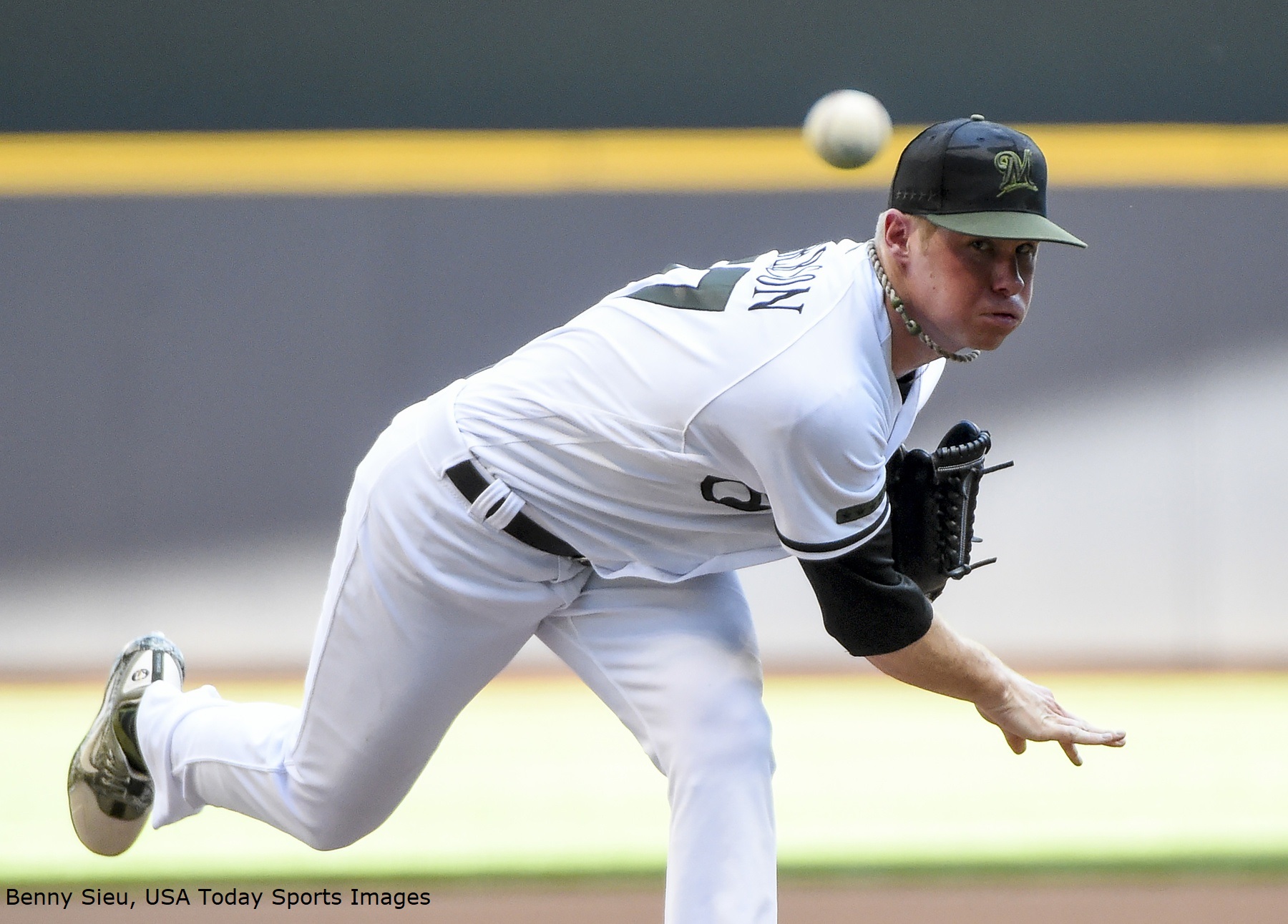The Brewers blitzed through another week, plus Memorial Day, going 7-1 at home against the Diamondbacks, Mets and Cardinals. They scored fifty-one runs and allowed twenty three over the eight games, outpacing their seasonal averages of 4.31 runs scored and 3.70 runs allowed per game. While three teams in the National League have a better run differential than the Milwaukee nine, the Brewers currently hold the best record in the league and have a 4.5 game lead over the Cubs for the division.
Aside from the team getting shutout for the 9th time this season on Thursday, the biggest concern of the week is Chase Anderson’s ongoing home run problem. Since Opening Day, Chase Anderson has only had one start where he didn’t allow a home run. Last year Anderson cut his HR/9 rate to 0.9, which was a career low, en route to his best season by DRA and WARP, and pretty much any other advanced metric you want to use to evaluate pitcher performance. Through two months of the 2018, Anderson’s home run rate has surged to 2.1 per 9, which would be a career high by almost 25 percent. In ten starts this season he’s almost allowed as many home runs as he did in twenty-five starts in 2017 (13 to 14).
Where are all these dingers coming from and can Anderson salvage his season? First, a chart with some home run rate splits:
| Fourseam | Sinker | Cutter | |
| 2017 | 0.75% | 0.43% | 0.99% |
| 2018 | 2.3% | 1.64% | 1.79% |
| Career | 1.04% | 0.86% | 0.89% |
The fourseam fastball, sinker and cutter are the three pitches where Anderson has traditionally given up the most home runs, and they’ve seen the biggest jumps this season in home run rate. While batters are whiffing slightly less often against these three pitches, there hasn’t been a huge drop off which would indicate that the pitches aren’t fooling them. Swings are generally stable and line drive rates are down.
Anderson hasn’t dramatically changed his pitch mix for these three pitches. He’s thrown the cutter at the same rate as 2017 and seems to have traded some sinkers for fourseam fastballs. If he stays with this mix, his rate of fourseamers would increase for the first time in his career and its usage would approach 2014, when he was a rookie in Arizona. Digging deeper into his pitch usage, there isn’t a particular pattern which batters could use to gain an advantage. Lefthanders see more sinkers early in the count, then Anderson moves to fourseam fastballs as he gets ahead and right handed hitters can expect to see fourseam fastballs almost half the time in their at bats, but nothing here is as extreme as say, Corey Knebel throwing a fastball when he’s behind in the count.
The velocity on all three fastballs is slightly down from 2017, when he posted career highs. The good news is that his velocity has slightly ticked up in May, but he’s still behind the pace he set last year. These slightly slower pitches are moving horizontally about the same as last year, but across the board there is less vertical movement. If those pitches that got down in the zone last year are meeting more upper cut swings as part of the MLB-wide change in launch angle over the past few years, that may explain Anderson’s subpar results.
For his career, Anderson does try and keep his fastballs middle and low, working away from both lefties and righties. He’s been working the same spots in the strike zone, staying below the top and not going below the zone, but he’s throwing much more to his glove side, meaning that while righties are still getting fed a steady diet of away pitches, Anderson is now focusing on pitching inside to left handers, and he is getting them to swing at more inside pitches, but those aren’t translating to whiffs.
Looking at all of these different indicators as a whole, there’s no smoking gun to point to which shows why batters are hitting so many home runs off Chase Anderson. Looking at the zones where batters are doing the most damage, and it honestly looks like he’s just throwing too many good pitches for batters to hit. As a pitcher who keeps the ball in the zone, he can fall pretty to hitters who will look for the ball in certain spots. Right now, Anderson is likely catching too much of the plate and batters are punishing those pitches.
The Brewers have used twenty-two pitchers this season (including Hernan Perez). Of the five pitchers with at least seven starts in 2018, the highest ranked on the team in DRA is Brent Suter, who is 14th. Anderson is only ahead of Wade Miley, J.J. Hoover, and Boone Logan and is performing at about his 15th percentile PECOTA forecast. As the forecast shows, there is potential for Anderson to perform as a good number two starter. It may be prudent for him to shelve the increased four seam usage and move towards his changeup and curveball. Batters are getting hits on those pitches at the same rate as the fourseamer, but they aren’t driving the ball. Introducing more pitches for batters to think about may help Anderson catch them off guard and start to produce similar results as 2017.
Photo Credit: Benny Sieu, USA Today Sports Images
